Aboutwire drawing dies
Wire drawing die products are essential components in the wire drawing process, a foundational technique employed across a multitude of industries.
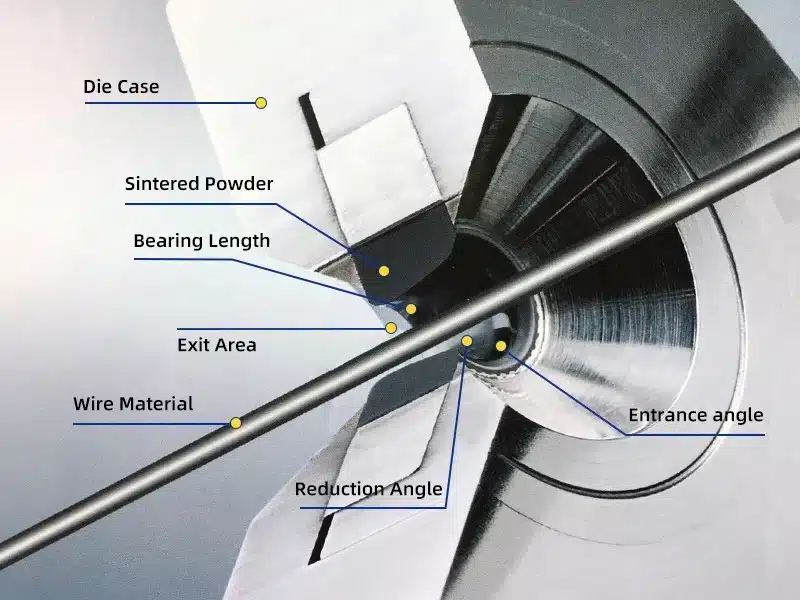
Introduction:
Wire drawing die products are essential components in the wire drawing process, a foundational technique employed across many industries. These dies are crucial in shaping and refining wire into various diameters, enabling the production of wires used in a wide array of applications.
In essence, wire drawing dies act as precision tools, facilitating the transformation of raw wire into finely crafted components. Their significance extends beyond mere manufacturing; they form the backbone of manufacturing, electronics, construction, and more industries.
In manufacturing, wire drawing dies are indispensable for producing wires of different sizes and materials, serving as the starting point for the creation of countless products. From electrical cables to mechanical components, wire drawing dies are pivotal in shaping the materials that drive industrial production.
Moreover, wire drawing dies find extensive use in the electronics industry, where the demand for fine wires with precise dimensions is paramount. These wires are essential for the production of electronic components, circuitry, and connectivity solutions, underpinning the functionality of modern devices and systems.
In the construction sector, wire drawing dies produce various materials, including steel wires used in reinforced concrete, fencing, and structural components. Their role in shaping and refining wire ensures the integrity and strength of these essential construction materials.
In essence, wire drawing dies are the unsung heroes of modern industry, quietly enabling the production of countless products and infrastructure components that form the foundation of our daily lives.
Wire Drawing Process Overview:

Wire drawing stands as a cornerstone process in precision manufacturing, tasked with the production of wires spanning a spectrum of diameters. At its core, wire drawing entails the gradual reduction of wire diameter through a series of meticulously crafted die openings. This process is characterized by its precision and efficiency, ensuring that wires meet stringent dimensional specifications with utmost accuracy.
Central to the wire drawing process are wire drawing dies, which serve as indispensable tools in shaping and refining wire. These dies are meticulously engineered to guide the wire through successive reductions in diameter while maintaining the integrity of its structure. As the wire passes through each die opening, it undergoes incremental changes, ultimately reaching the desired dimensions specified by the manufacturing requirements.
The significance of wire drawing dies lies in their ability to achieve precision and consistency in wire production. By exerting controlled pressure and friction on the wire, these dies ensure uniformity in diameter, surface finish, and mechanical properties throughout the length of the wire. This level of precision is crucial in various industries where wires are utilized as critical components in diverse applications.
Furthermore, the wire drawing process is highly versatile, accommodating a wide range of materials, including metals, alloys, and composites. Whether producing copper wires for electrical applications, steel wires for structural reinforcement, or specialized alloys for aerospace components, wire drawing dies play a vital role in shaping the materials to meet specific performance criteria.
In essence, the wire drawing process exemplifies the marriage of precision engineering and manufacturing prowess, where each component, including wire drawing dies, contributes to the seamless production of wires tailored to exacting standards.
Types of Wire Drawing Dies
Wire drawing dies encompass a diverse range of types, each meticulously engineered to cater to specific applications and materials. These dies leverage distinct materials and manufacturing techniques to achieve optimal performance and durability across various wire drawing operations.
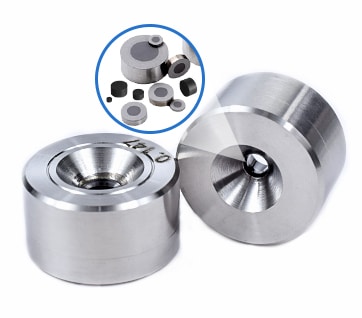
Polycrystalline Diamond (PCD) Dies
Polycrystalline diamond (PCD) dies offer a compelling blend of durability and cost-effectiveness, making them a versatile option for a wide range of wire materials. These dies consist of diamond particles sintered together under high pressure and temperature, resulting in a robust yet cost-efficient die material. PCD dies exhibit excellent wear resistance and thermal conductivity, making them suitable for both high-volume production and specialized applications where precision is paramount.
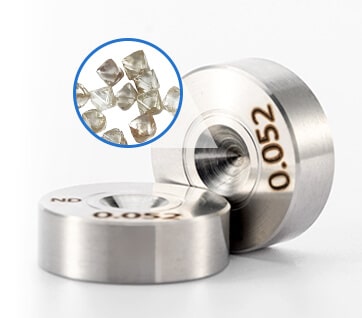
Natural Diamond Dies
Natural diamond dies are prized for their exceptional surface finish and dimensional accuracy, making them ideal for precision applications. These dies are crafted from natural diamond crystals, meticulously selected and shaped to achieve the desired wire dimensions with utmost precision. Natural diamond dies offer unparalleled smoothness and consistency, resulting in wires with superior surface quality and mechanical properties. They are commonly employed in industries where precision is paramount, such as aerospace, automotive, and medical device manufacturing.
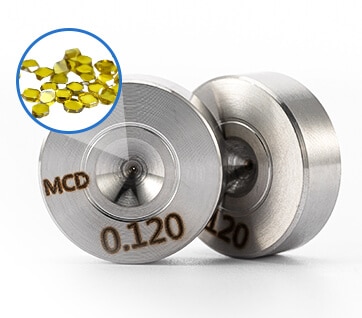
Single Crystal Diamond Dies
Single crystal diamond dies stand out for their unparalleled hardness and wear resistance, making them the preferred choice for drawing high-strength wires. These dies are crafted from a single crystal diamond substrate, ensuring exceptional durability and longevity even under demanding operating conditions. Their ability to withstand high pressures and abrasive wear makes them indispensable in industries requiring precise wire dimensions and superior mechanical properties.
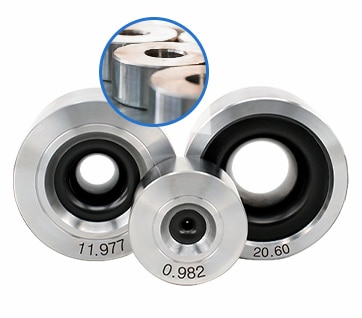
Tungsten Carbide Dies
Tungsten carbide dies are renowned for their exceptional hardness and toughness, making them well-suited for drawing both ferrous and non-ferrous metals. These dies are composed of tungsten carbide grains bonded together by a cobalt matrix, imparting superior wear resistance and mechanical strength. Tungsten carbide dies excel in high-speed wire drawing operations, where they can withstand extreme pressures and temperatures while maintaining dimensional accuracy and surface finish.
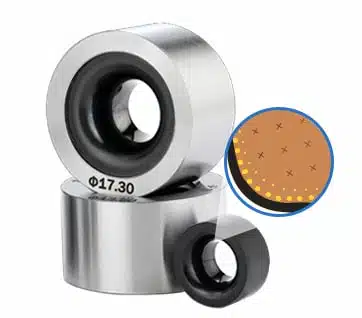
Nano-Diamond Composite Coating Drawing Dies
Nano-diamond composite coating drawing dies feature a cemented carbide (WC-Co) substrate, with the inner hole surface coated with a micro-nano-scale diamond composite coating using chemical vapor deposition (CVD) technology. This composite coating enhances the wear resistance and surface hardness of the die, prolonging its lifespan and ensuring consistent wire drawing performance. Ground and polished to precision, these dies offer superior performance in drawing a wide range of wire materials, making them a preferred choice for demanding wire drawing applications.
Manufacturing Process
The production of wire drawing dies is a meticulous process that requires precision engineering and a keen focus on detail to ensure the highest quality and performance standards are met. From material selection to final finishing, each step plays a crucial role in crafting dies that can withstand the rigors of wire drawing operations.
careful selection of material
The manufacturing process begins with the careful selection of materials suited to the specific requirements of wire drawing dies. High-quality materials with exceptional hardness, wear resistance, and thermal stability are preferred to ensure longevity and performance under demanding conditions. Common materials include single crystal or polycrystalline diamond for superior hardness, tungsten carbide for excellent wear resistance, and natural diamond for precision applications.
Advanced processing technology
Once the materials are chosen, advanced machining techniques are employed to shape the dies to exact specifications. Electrical discharge machining (EDM) or laser cutting are commonly used methods for precision shaping of wire drawing dies. These techniques allow for intricate designs and precise dimensional control, ensuring that the dies meet the stringent tolerances required for optimal wire drawing performance.
Surface Finishing
Throughout the manufacturing process, rigorous quality control measures are implemented to verify the dimensional accuracy and surface integrity of the wire drawing dies. Inspection techniques such as optical microscopy and laser profilometry are utilized to ensure that the dies meet the specified tolerances and performance criteria. Any deviations or defects are promptly addressed to maintain the highest standards of quality and consistency.
Strict quality control
Surface finishing processes are critical to enhancing the performance and longevity of wire drawing dies. After machining, the dies undergo polishing to achieve a smooth surface finish, reducing friction and minimizing wire abrasion during drawing operations. Additionally, specialized coatings may be applied to further enhance wear resistance and reduce friction, prolonging the lifespan of the dies and improving overall efficiency.
We can produce wire drawing dies that exhibit exceptional performance, durability, and reliability by adhering to stringent manufacturing processes and quality control standards. The manufacturing process of wire drawing dies can be found in our website’s Factory Profile-Manufacturing Process section. These precision-engineered dies are essential components in wire drawing operations across many industries, enabling the production of high-quality wires that meet the exacting demands of modern manufacturing.
Applications and Industries
Wire drawing die products play a pivotal role in a diverse array of industries, where their versatility and precision are indispensable for producing high-quality wire components tailored to specific applications. The following industries represent just a few examples of where wire drawing die products find extensive use:

Telecommunications:
In the telecommunications industry, wire drawing dies are instrumental in the production of fine wires used in cables and connectors. These wires serve as the backbone of communication networks, transmitting signals with precision and reliability. Whether for fiber optic cables or copper wiring, wire drawing dies ensure that telecommunications infrastructure meets the stringent standards required for seamless connectivity and data transmission.
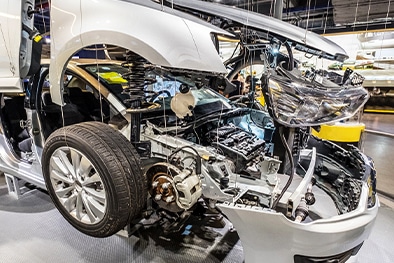
Automotive:
Wire drawing dies are integral to automotive manufacturing processes, where they are used to produce various components such as springs, fasteners, and electrical wiring. From the suspension system to the engine components, wires drawn with precision ensure optimal performance and durability in automotive applications. Wire drawing dies enable manufacturers to produce wires of different diameters and materials, catering to the diverse needs of the automotive industry.

Aerospace:
The aerospace industry relies on wire drawing dies to produce aerospace wires and cables for aircraft construction and instrumentation. These wires must meet stringent strength, reliability, and weight requirements, making precision wire drawing essential. Wire drawing dies enable manufacturers to produce wires with exacting dimensions and mechanical properties, ensuring the safety and performance of aerospace components in demanding operating environments.
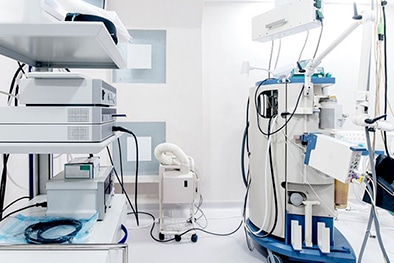
Medical Devices:
In the medical devices industry, wire drawing dies are utilized for producing fine wire components used in surgical instruments, implants, and medical devices. These wires must meet stringent quality standards for biocompatibility, corrosion resistance, and mechanical properties. Wire drawing dies enable manufacturers to achieve the precision and consistency required for critical medical applications, contributing to healthcare and patient care advancements.
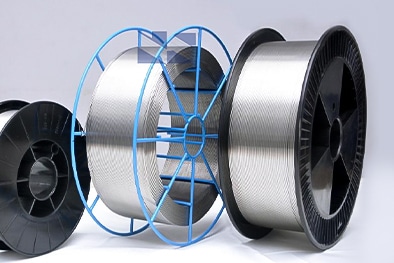
Welding Industry:
The welding industry relies on wire drawing dies for the production of welding wire used in various welding processes such as MIG (Metal Inert Gas) and TIG (Tungsten Inert Gas) welding. Welding wire drawn with precision ensures stable arc characteristics, consistent weld bead formation, and optimal mechanical properties in welded joints. Wire drawing dies play a critical role in producing welding wire of different diameters and compositions, catering to the diverse needs of welders across industries such as construction, manufacturing, and automotive.
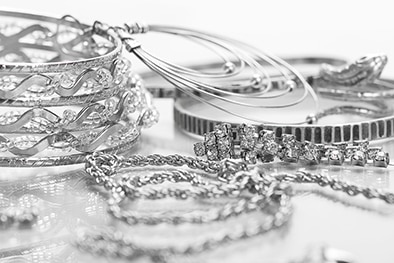
Jewelry Industry:
In the jewelry industry, wire drawing dies are essential for producing fine wires used in the creation of intricate jewelry designs. Whether for crafting delicate chains, intricate filigree work, or precision settings for gemstones, wire drawing dies enable jewelers to achieve the desired dimensions and surface finishes required for exquisite craftsmanship. By leveraging wire drawing dies, jewelers can create stunning pieces that showcase the beauty and elegance of precious metals and gemstones, meeting the discerning tastes of customers worldwide.
The versatility and precision of wire drawing die products make them indispensable in modern manufacturing processes across various industries. From telecommunications to aerospace, automotive, medical devices, welding, and the jewellery industry, wire drawing dies play a crucial role in enabling the production of high-quality wire components that drive innovation and progress in various sectors.
Quality Control and Maintenance
Ensuring the performance and reliability of wire drawing dies hinges upon implementing stringent quality control measures and proactive maintenance practices. These measures are vital for optimizing production efficiency, minimizing downtime, and maximizing the lifespan of wire drawing dies.
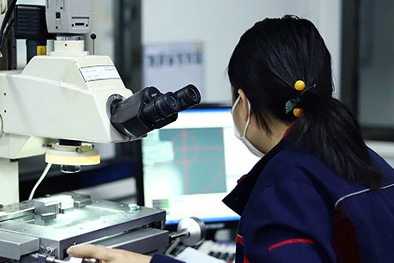
Quality control measures are integral to verifying wire drawing dies’ dimensional accuracy and surface integrity. Advanced inspection techniques such as optical microscopy and laser profilometry are employed to accurately assess die dimensions and detect any surface defects or irregularities. By meticulously examining the dies at various stages of production, manufacturers can identify and address issues promptly, ensuring that the dies meet the specified tolerances and performance criteria.
Regular maintenance practices are essential for prolonging the lifespan of wire drawing dies and optimizing their performance. Cleaning the dies regularly helps remove debris, contaminants, and residues that can accumulate during the wire drawing process, minimizing the risk of surface damage and enhancing die longevity. Additionally, lubrication of the dies reduces friction and wear, ensuring smooth wire drawing operations and preventing premature wear and damage to the dies. By adhering to a proactive maintenance schedule, manufacturers can minimize downtime, reduce production costs, and maximize the efficiency of wire drawing operations.
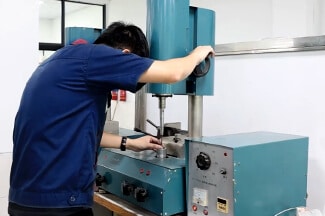
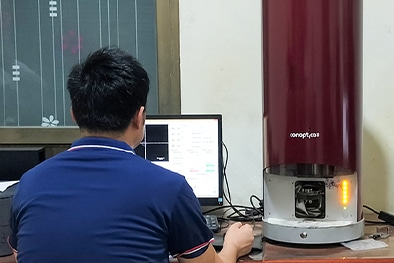
Quality assurance protocols play a pivotal role in maintaining the highest standards of quality and consistency in wire drawing die production. These protocols encompass a comprehensive set of procedures and checks designed to verify die performance and reliability. By implementing robust quality assurance protocols, manufacturers can ensure that each wire drawing die meets the stringent requirements of its intended application, guaranteeing the utmost precision and reliability in wire production.
By combining rigorous quality control measures with proactive maintenance practices, manufacturers can uphold the performance and reliability of wire drawing dies, ensuring optimal efficiency and quality in wire drawing operations. These efforts contribute to minimizing downtime, reducing production costs, and enhancing the overall competitiveness of wire manufacturing processes.
In the factory profile-Factory Equipment-Testing Equipment section of our website, you can also see our efforts in quality control.
